#for the cultural heritage
Text
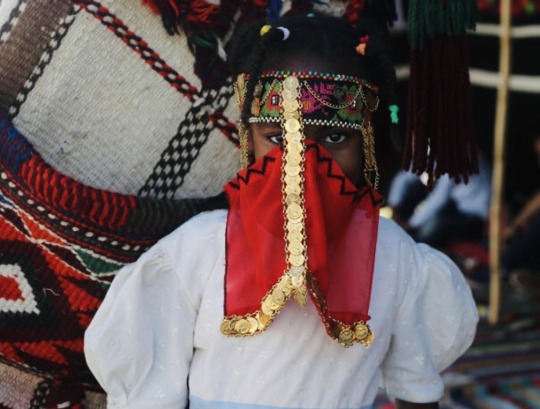


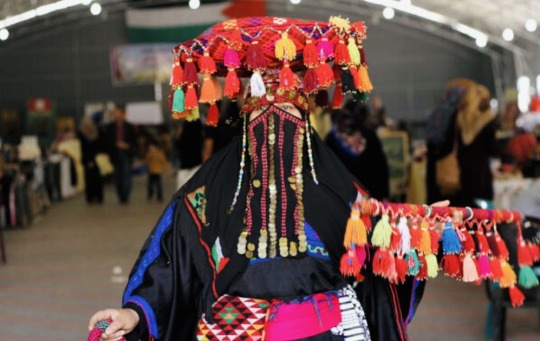
Gaza City, Gaza Strip. 20th Apr, 2016. Palestinians in Gaza city celebrate World Heritage Day by wearing traditional Palestinian dress and showing hand-made traditional products.
#palestine#west asia#middle east#asia#levant#palestinian culture#traditional jewelry#traditional clothing#world heritage day#Gaza#gaza city#gaza strip
8K notes
·
View notes
Text
In the weeks since Hamas' Oct. 7 attack, Israeli airstrikes on the Gaza Strip have killed more than 15,000 Palestinians, according to Gaza's health ministry, and destroyed thousands of homes in the territory.
And there have also been tremendous losses to the region's ancient and globally significant cultural heritage. The region was a hub for commerce and culture under Egyptian, Greek, Roman and Byzantine rule. It remained influential for centuries thereafter.
A recent survey by the group Heritage for Peace details the damage done so far to more than 100 of these landmarks in Gaza since the start of the present conflict.
The casualties include the Great Omari Mosque, one of the most important and ancient mosques in historical Palestine; the Church of Saint Porphyrius, thought to be the third oldest church in the entire world; a 2,000-year-old Roman cemetery in northern Gaza excavated only last year; and the Rafah Museum, a space in southern Gaza which was dedicated to teaching about the territory's long and multi-layered heritage — until it was hammered by airstrikes early on in the conflict. (...)
"If this heritage be no more in Gaza, it will be a big loss of the identity of the people in Gaza," said Isber Sabrine, president of Heritage for Peace, in an interview with NPR. (...)
"The people in Gaza, they have the right to keep and to save this heritage, to tell the history, the importance of this land," he said.
The 1954 Hague Convention, agreed to by Palestinians and Israelis, is supposed to safeguard landmarks from the ravages of war. But landmarks in Gaza have been destroyed by Israeli strikes in earlier rounds of fighting. Dozens of sites, including the now-obliterated Great Omari Mosque, suffered damage in 2014. A report by UNESCO, the United Nations body that designates and protects World Heritage sites, cites further destruction to cultural and historic sites in Gaza in 2021. (...)
Destruction of historical sites and other cultural sites is part of genocide, it's the destruction of the proof of a people's relationship to the land and a horrible emotional blow at the community. UNESCO must act immediately against Israel's destruction of Palestinian heritage, and every country and international organism must expel Israel and impose sanctions to make the genocide and apartheid end.
#💬#palestine#gaza#israel#free palestine#world heritage#cultural heritage#historical sites#archaeology#cultures
2K notes
·
View notes
Text

Beautiful morning 🌿
Cairo, Egypt 🌻
#يوميات بنت إسمها ش#مصر#egypt#photography#thisisegypt#art#masterpiece#cairo#shaimaa fekry#palm trees#history#heritage#culture#islamic#mosque#architecture
865 notes
·
View notes
Text
culture tips for writing asian settings: tea varieTEAs
atla's got major Tea Guy representation in iroh but let's be real, even non-tea guys are going to be drinking tea in an asian-inspired setting—you'd be served it instead of water most places. so, what kind of tea are you picking for them?

as an east asian reader, it can take me out of the setting to see the characters drink something like chamomile (from europe/west asia) or... most herbal teas, to be honest. ngl it was weird to see iroh in the show, characterised as a huuuuuuge tea snob, drink stuff like jasmine (it's fine it's just basic, is all! imo!) or like.... a random flower he encounters in the wild.
when we're talking tea, real asian tea, we're talking about the leaf of the camellia sinensis plant. the huge variety we have of tea is actually from the different ways of processing that exact same leaf. popular varieties include:
green: the leaf goes through minimal processing, can have a bright and even leafy/grassy flavour (examples: gunpowder, longjing aka dragon well, matcha, genmaicha)
white: also undergoes minimal processing, with a lighter flavour than even green (examples: silver needle, shou mei)
oolong: the leaf is semi-oxidised, curled, and twisted—can be characterised by a tanniny flavour with a bright aftertaste. my personal favourite! (examples: da hong pao, tieguanyin, dong ding, alishan)
dark (black): note this isn't the same as black tea as we think of it in english. the leaf is fermented to produce an earthy tea with a flavour like petrichor (examples: pu'er)
all the teas listed in the "examples" are fairly credible teas that i think a real tea snob like iroh would drink.

ok, but what about...
"black tea" as we know it in the west—assam and ceylon etc? this variety is actually called "red tea" in chinese. we don't drink it with milk but to be honest, i've just... never really heard of anyone drinking chinese red tea? which is why i've kept it off the list. (there's lapsang souchong, but i associate that with bri'ish people...) anyone who does drink it, let me know! on the other hand something like assam/ceylon, while extremely delicious and also asian, is a product of british colonialism and is consumed with milk. i think if you wanted to massage some of the traditions & have chai-drinking indian-influenced characters, though, that's cool!
do you actually not drink herbal tea? we do... but a lot of it is considered medicinal. we've got stuff like herbal "cooling tea" with ingredients like sour plum, mesona, or crysanthemum; tea that warms you up like ginseng or ginger. the whole concept of hot/cold in chinese medicine though... that deserves another culture post
camellia leaf murdered my family & i have a grudge against it; what else can my blorbos drink? there'a some good, tasty stuff made of wheat, barley, buckwheat, even soybean. wouldn't be egregious for the characters to drink that!
is milk sacriligeous? a real tea snob would think so, but a lot of asians nowadays are chill about milk in tea—usually in western-influenced red tea. hong kong, thailand, india, taiwan, and malaysia (among others) have their own cultures of milk tea, which has even become a democratic rallying point.
what do you think of iroh inventing bubble tea? my main issue with it is it's anachronistic! it was invented in taiwan in the late 20th century, but atla's set in the equivalent of the mid-19th century... you could also make arguments about whether iroh's too snobby about tea to invent it LOL
there's soooo much more i can say about all this so: keep your eyes peeled! i'll talk about medicine & tea ceremony in the near future <3
disclaimer | more tips
#atla#atla culture#atla meta#avatar the last airbender#iroh#asian culture tips#tea#so i'm making this post as not QUITE a certified Tea SnobTM the way iroh is#but i do really love and enjoy many east asian teas#and i start every day off with a cup of strong milk tea (probably reflecting my own cultural heritage tho ;) )#and i do look down on white ppl tisanes. that shit aint good!!
1K notes
·
View notes
Text

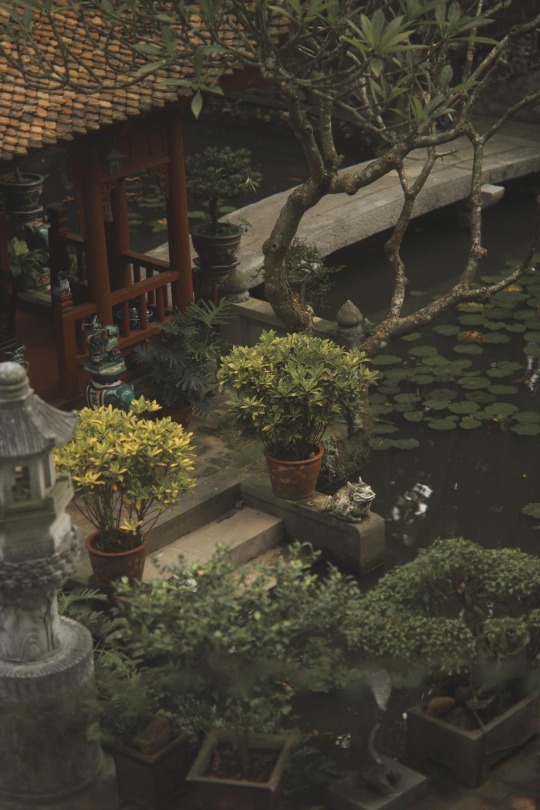
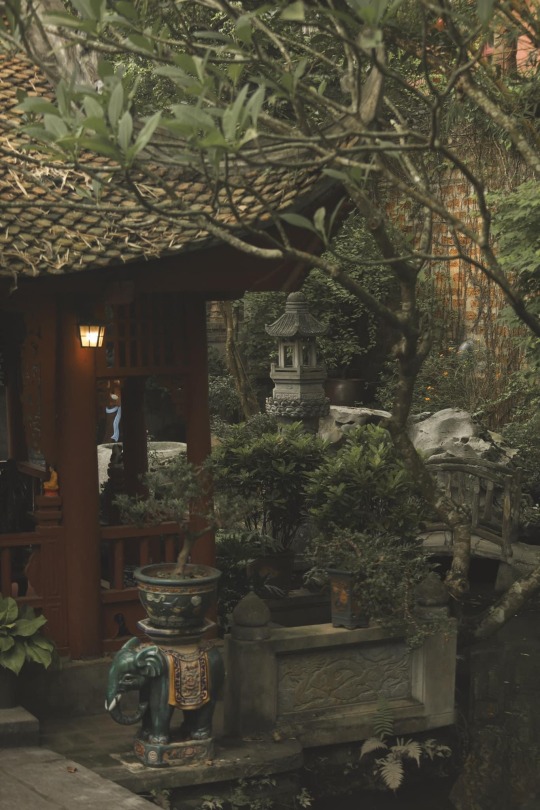
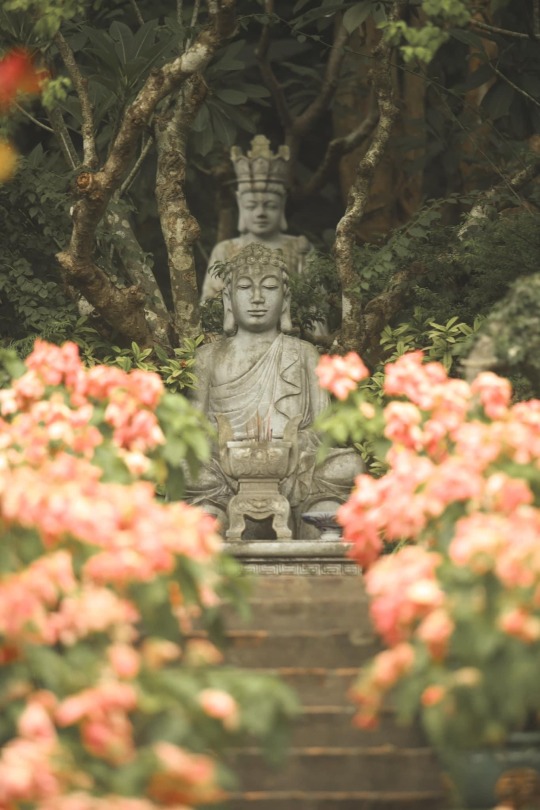
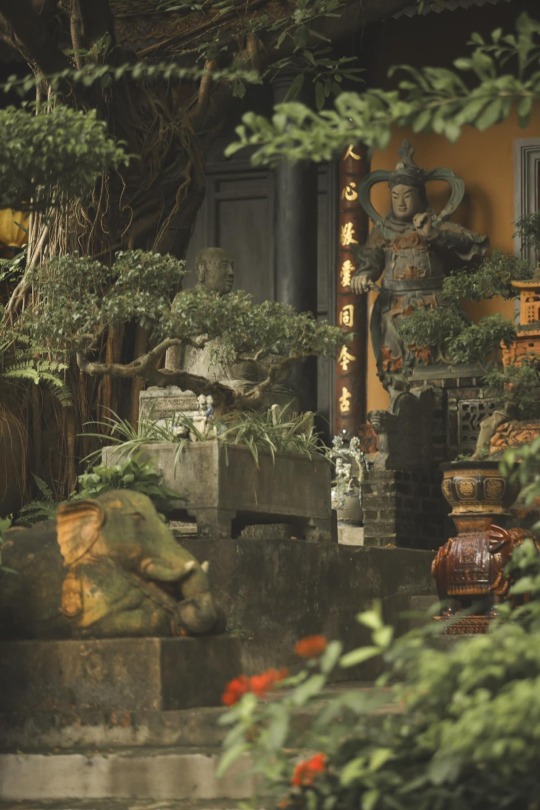
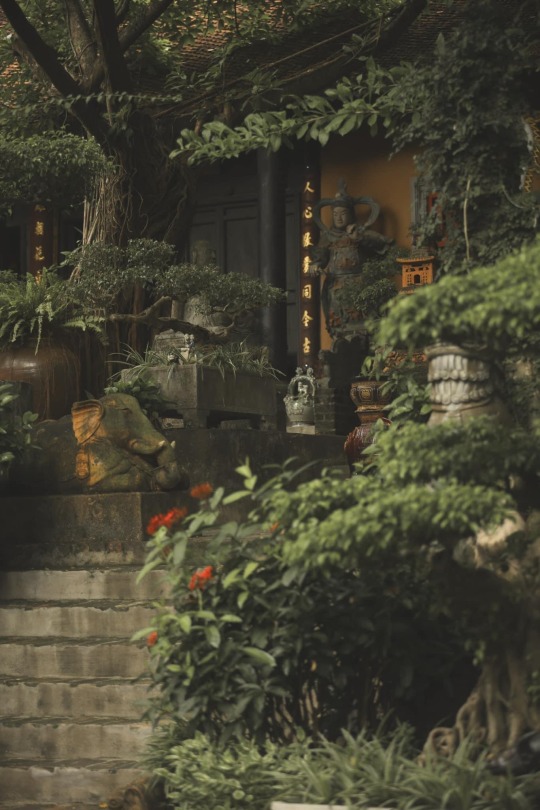


Việt Phủ Thành Chương, Hanoi, Vietnam. Credit to Hoang Anh.
#vietnam#vietnamese#culture#history#sinosphere#travel destinations#travel#hanoi#heritage#museum#restored#traditional#traditional architecture#lotus pond#garden#antiques#traditional art#traditional arts#art
2K notes
·
View notes
Text
"Discarded shells from restaurants and hotels are being used to restore damaged oyster ecosystems, promote biodiversity and lower pollution in the city’s bays...
Nestled in between the South China Sea and the Pearl River Delta, Hong Kong has been seen historically as an oyster hotspot. “They have been supporting our livelihood since ancient times,” says Anniqa Law Chung-kiu, a project manager at the Nature Conservancy (TNC) in Hong Kong. “Both oysters and their shells are treasures to humans.”
Over the past five decades, however, the city’s sprawling urban development, water pollution, as well as the over-harvesting and frequent seafloor dredging by the lime industry – which uses the crushed shells to make construction material – have destroyed Hong Kong’s oyster habitats and made the waters less hospitable for biodiversity.
The more oyster colonies falter, the worse the problem gets: oysters are filter feeders and purify water by gobbling up impurities. Just one Hong Kong oyster can filter up to 200 litres of water a day, more than any other known oyster species. But decades of rapid industrialisation have largely halted their water-purifying services.
The depletion of Hong Kong’s natural oyster reefs also affects the ability of local farmers to sustainably cultivate their oysters in a healthy environment, denting the reputation of the city’s 700-year oyster farming tradition, designated by Unesco as an “intangible cultural heritage”.
Inhabitants of the coast feel abandoned, says Ken Cheng Wai-kwan, the community leader of Ha Pak Nai on Hong Kong’s Deep Bay, facing the commercial city of Shenzhen in China. “This place is forgotten,” Cheng says. “Oysters have been rooted here for over 400 years. I ask the question: do we want to lose it, or not?”
A group of activists and scientists are taking up the challenge by collecting discarded oyster shells and recycling them to rebuild some of the reefs that have been destroyed and forgotten in the hope the oysters may make a comeback. They’ve selected locations around the island where data they’ve collected suggests ecosystems still have the potential to be rebooted, and there are still enough oyster larvae to recolonise and repopulate reefs. Ideally, this will have a positive effect on local biodiversity as a whole, and farming communities.
Farmers from Ha Pak Nai were among the first to hand over their discarded shells to the TNC team for recycling. Law’s team works with eight oyster farmers from Deep Bay to recycle up to 10 tonnes of shells every year [over 22,000 pounds]. They collect an average of 870kg every week [over 1,900 pounds] from 12 hotels, supermarkets, clubhouses and seafood restaurants in the city, including some of its most fashionable establishments. About 80 tonnes of shells [over 176,000 pounds] have been recycled since the project began in 2020.
Restaurants will soon be further incentivised to recycle the shells when Hong Kong introduces a new fee for waste removal – something that is routine in many countries, but only became law in Hong Kong in July and remains controversial...
Preliminary data shows some of the restored reefs have started to increase the levels of biodiversity, but more research is needed to determine to what extent they are contributing to the filtering of the water, says Law.
Scientists from the City University of Hong Kong are also looking to use oyster shells to increase biodiversity on the city’s concrete seawalls. They hope to provide tiny, wet shelter spots around the seawall in which organisms can find refuge during low tide.
“It’s a form of soft engineering, like a nature-based solution,” says Charlene Lai, a research assistant on the team."
-via The Guardian, December 22, 2023
#oyster#oyster farming#sea shells#seafood#hong kong#ecosystem restoration#biodiversity#ecosystem#water pollution#clean water#cultural heritage#marine life#marine animals#marine science#good news#hope
795 notes
·
View notes
Text

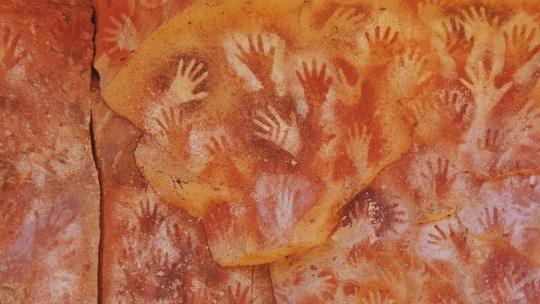
Cueva de las Manos, Argentina
7K notes
·
View notes
Text

#black history month#black excellence#african american history#black heritage#celebrating black history#black culture#black leaders#civil rights#black achievements#black pride#historical legends#black lives matter#black empowerment#black history 365#trailblazers#black history facts#our history#black history celebration#empowering black voices.#021224
418 notes
·
View notes
Text
Could the Ace Attorney fandom stop pretending that Phoenix Wright or Miles Edgeworth or any of the main cast is white? Idgaf if the localized version is set in America. Asian Americans exist. You are consuming a piece of Asian-made media, not everything is about white people
#I need y’all to stop thinking of white people as the default setting#The amount of people in this fandom that whitewashes Edgeworth is insane#Surprise Asians can wear clothes outside our native cultures#Asian characters shouldn’t have to act explicitly or stereotypically Asian for you to acknowledge their heritage#This applies to other pieces of media too#Asian characters can exist in a modern setting they can exist in a Western setting#Please get rid of your orientalist lens because we are literally just people#Ace attorney#miles edgeworth#phoenix wright#literally so done with how this fandom of an Asian game treats Asians
1K notes
·
View notes
Text
[Hanfu · 漢服]China's national Important Cultural Relics Impression Series By Artist @陆曼陀
China Neolithic Period:The Hongshan culture(4700-2900 BC)Relics<玉猪龙/Pig dragon>
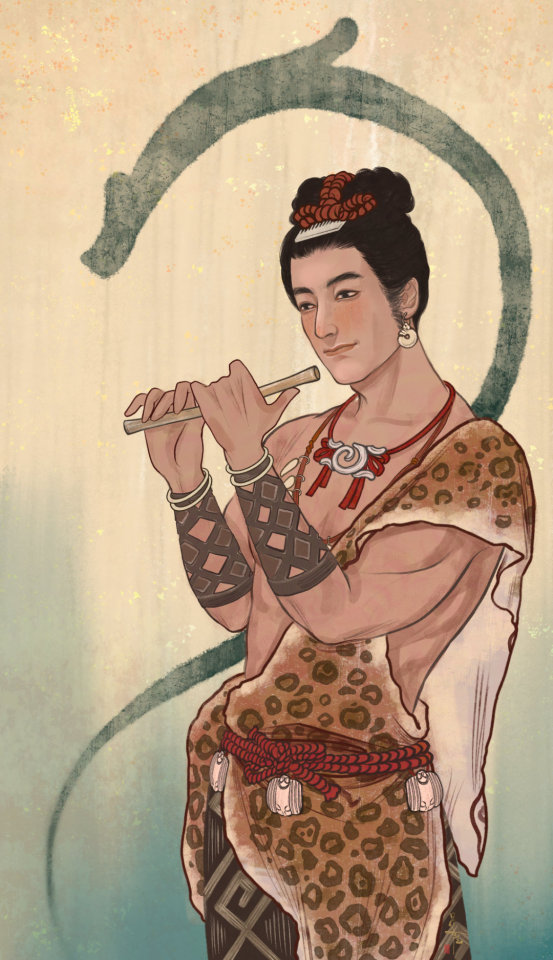

China Shang dynasty / Western Zhou dynasty(1200–800 BC) · Shu state Relics < 太阳神鸟金饰/Golden Sun Bird>

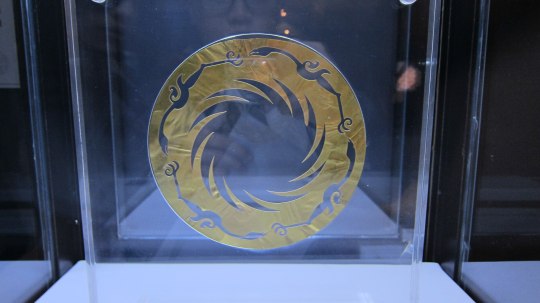
China Western Han Dynasty (202 BC – 9 AD)Artifact Relics<长信宫灯/oil lamp in the shape of a kneeling female servant>


After the lamp is lit, the soot enters the base of the palace lantern through the sleeve to achieve the purpose of cleaning the air.

China Eastern Han Dynasty(25–220 AD)Artifact Relics<铜奔马 or the Galloping Horse Treading on a Flying Swallow (馬踏飛燕)>


China Eastern Han Dynasty(25–220 AD) Artifact Relics<摇钱树/Money tree (myth)>

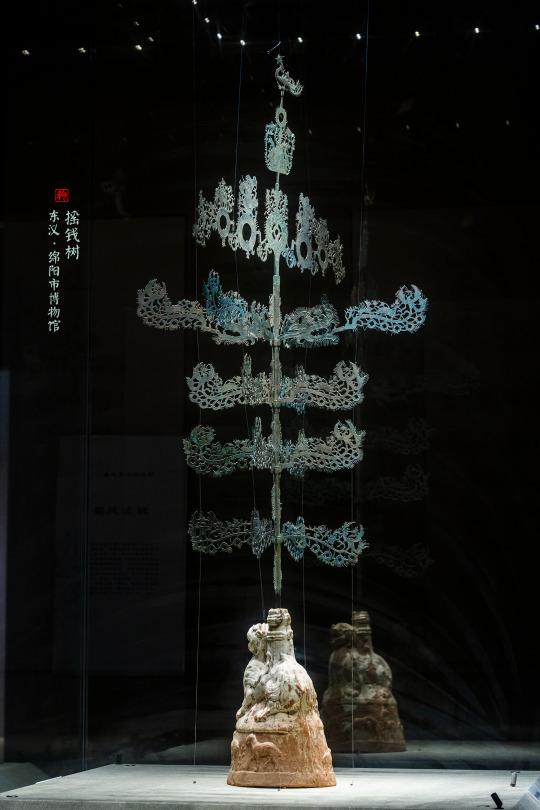
China Tang Dynasty(618–907CE) Artifact Relics<女立俑/Female standing figurine >
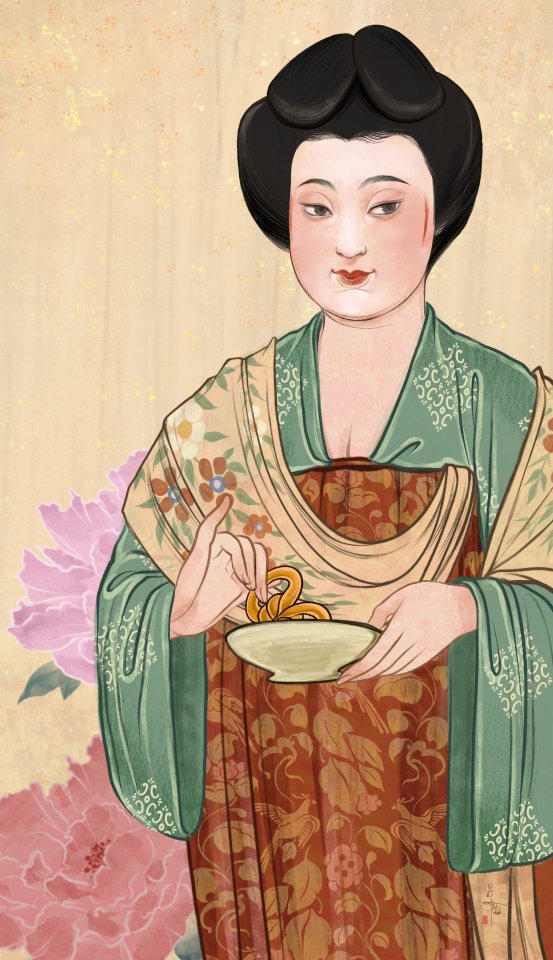
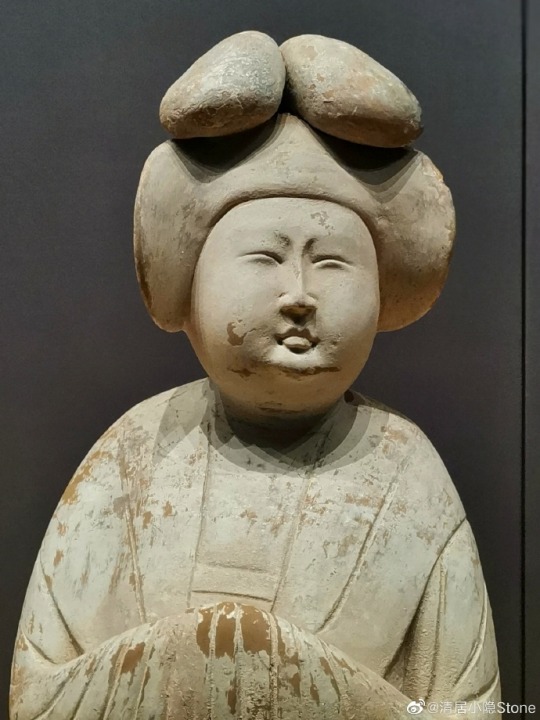
China Song Dynasty (960–1279) Artifact Relics<汝窑天蓝釉刻花鹅颈瓶/Ru kiln sky blue glaze carved gooseneck bottle>
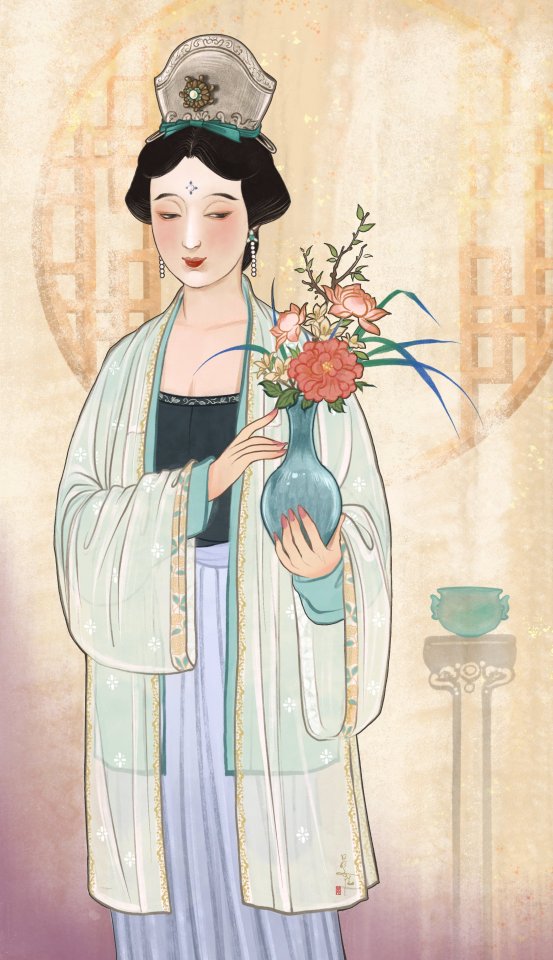

China Song Dynasty (960–1279) Painting<千里江山图/A Thousand Li of Rivers and Mountains>by 王希孟(Wang Ximeng)



China Yuan dynasty (1279–1368) Artifact Relics<霁蓝釉白龙纹梅瓶/Ji blue-glazed plum vase with white dragon pattern>

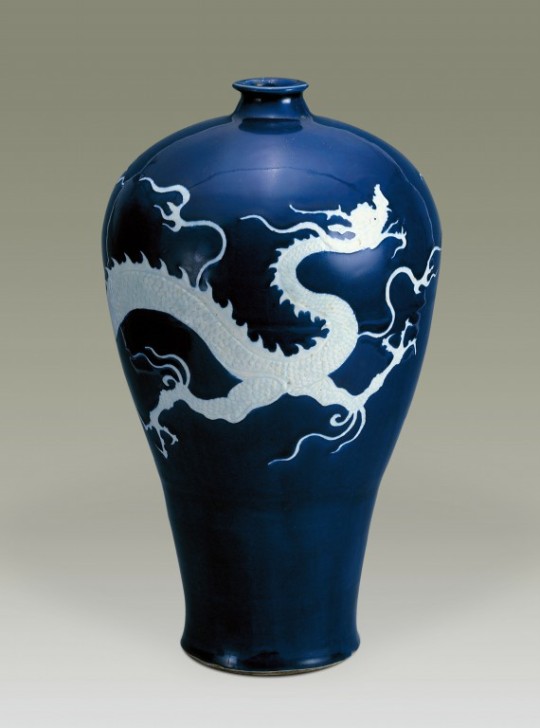
【Artist:陆曼陀 Social Media】
————————
Twitter:https://twitter.com/LuDanling
Weibo:https://weibo.com/u/2846691957
Post Source:https://weibo.com/2846691957/NzQ9IyzKL
————————
#chinese hanfu#陆曼陀#China history#chinese art#hanfu illustration#hanfu accessories#hanfu#hanfu history#china#chinese#history#chinese aesthetics#culture relic#汉服#漢服#heritage#civilization
427 notes
·
View notes
Text
What if I did something horrible to my notification box.
I made a poll with some of the newer trends. I vastly miscalculated what the results would be due to how close the Ides were and how few people knew about the rosin thing.
But now, I redeem myself with the classics and I'll probably miss one so feel free to reblog and make fun of me for it so I can get a larger sample size.
Have fun (:
#walmart the official#walmart#color of the sky#color theory#childrens hospital#goncharov#man me a sand#cecil palmer#i like your shoelaces#tumblr shoelaces#tumblr history#tumblr culture#tumblr heritage#spiders georg#tumblr being tumblr#sans undertale#slenderverse#corpo blogs#superwholock#onceler#poll#polls#my polls#poll time#random polls#random poll#tumblr polls#tumblr poll
330 notes
·
View notes
Text
I dunno man. Maybe canon will prove me wrong, but I don't think the name Kiriona was forced on Gideon. Gideon, who has wanted her whole life to feel like she's wanted by someone and belongs somewhere. If her newly-found father took her aside and said "In the language of my grandparents, our ancestors, your name is pronounced Kiriona. I would like to call you that, to save on confusion." I just... I think she'd be cool with saying yes.
She doesn't really identify with it, and she has highly ambivalent feelings about the father in question, but the name Kiriona connects her with grandparents. It might have been what her great-grandmother would have called her, if things had ever been simple and kind enough that they could have met. Kiriona offers her a place to belong in connection with the generations before her. As much as it's not enough, not on its own and as isolated from those generations and that culture as she is, its also not nothing. And I can't believe it's less than nothing.
#like.... I am not gonna believe a name that connects her with her indigenous cultural heritage is gonna be Just Plain Bad#not until she tells us so with her own mouth#that her connection is so tenuous and entirely through a huge dickbag of a dad doesn't make it any less hers#and that's something that has always mattered to her#nav is a niner name#kiriona is a māori name#and treating the name kiriona like it's a curse someone put on her just doesn't sit right#come on now#the locked tomb#gideon nav#kiriona gaia#ntn spoilers#nona the ninth
3K notes
·
View notes
Text
ALL YOU NEED TO KNOW ABOUT THE HEAD OF OBA
THE BENIN KINGDOM
THE LOOTED TREASURES BY THE BRITISH EMPIRE
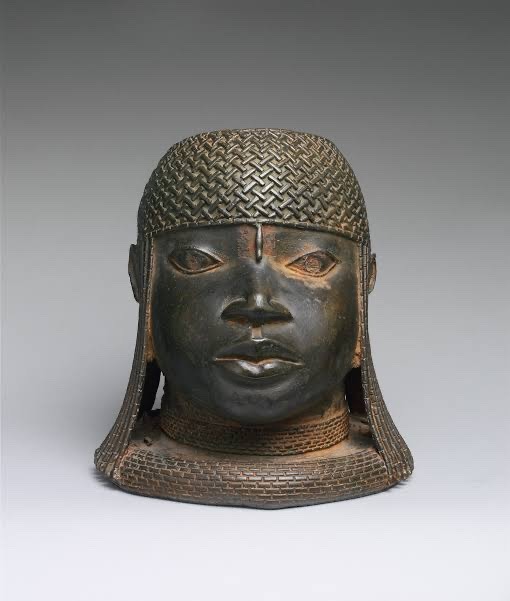
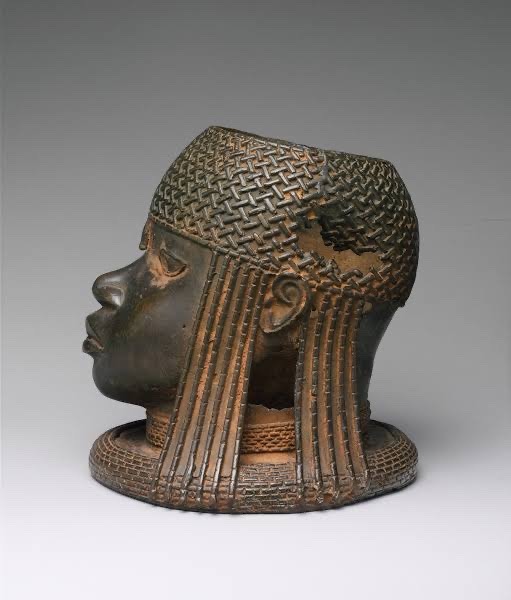
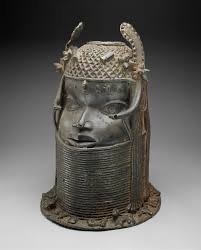
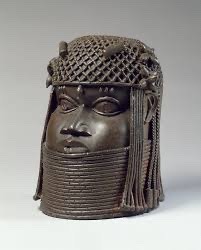
BLACK HISTORY IS DEEPER THAN SLAVE TRADE
The head sculptures of the Oba of Benin, also known as the Benin Bronzes, are a collection of intricate bronze and brass sculptures created by the Edo people of Nigeria. These sculptures typically depict the reigning Oba (king) of the Benin Empire and were produced over several centuries, with some dating back to the 13th century.
They are renowned for their artistic and historical significance, representing the cultural heritage and power of the Benin Kingdom. These sculptures often portray the Oba wearing coral beaded regalia, symbolizing his divine status and authority.
Many of these artifacts were taken from Benin during the late 19th century by British colonial forces, and they are now scattered in museums and private collections worldwide. There have been ongoing discussions and negotiations regarding their repatriation to Nigeria to restore their cultural heritage.
The head sculptures of the Oba of Benin remain a testament to the rich artistic and historical legacy of the Edo people and the Benin Kingdom.
HOW THE BRITISH STOLE FROM THE EDO TRIBE
1. British Punitive Expedition: In 1897, a British expedition, led by British officials and soldiers, was sent to the Benin Kingdom (in what is now Nigeria) with the stated objective of punishing the Oba of Benin, Oba Ovonramwen, for resisting British influence and trade in the region.
2. Sacking of the Royal Palace: During the expedition, the British forces entered the royal palace in Benin City, where many of these intricate bronze and brass sculptures were housed. The palace was looted, and numerous artifacts, including the Benin Bronzes, were taken.
3. Confiscation and Dispersal: The looted artifacts were then confiscated by the British authorities and later distributed to various individuals, museums, and institutions. Many of these artworks ended up in European museums and private collections.
The theft of the Benin Bronzes remains a contentious issue, as these artworks are considered cultural treasures of the Edo people and Nigeria as a whole. There have been ongoing discussions and demands for the repatriation of these artifacts to Nigeria, which has gained momentum in recent years as part of broader efforts to address historical injustices related to colonial-era looting.
The head sculptures of the Oba of Benin, like many traditional African artworks, hold deep symbolic significance within the context of the Benin Kingdom and its culture. Here are some of the key symbols and meanings associated with these sculptures:
1. Royal Authority: The Oba's head sculptures symbolize the authority and divine status of the reigning monarch, who was regarded as a sacred figure in Benin society. The elaborate regalia, such as coral beads and headdresses, worn by the Oba in these sculptures signifies his royal and spiritual power.
2. Ancestral Connections: The sculptures often depict the Oba with distinctive facial scarification patterns and detailed facial features. These features can represent specific ancestors or dynastic connections, emphasizing the Oba's lineage and connection to past rulers.
3. Historical Record: The sculptures also serve as historical records, documenting the appearance and regalia of the Oba during their reigns. This provides valuable insights into the history and evolution of the Benin Kingdom over the centuries.
4. Spiritual Protection: Some sculptures may incorporate elements like beads and cowrie shells, which were believed to have protective and spiritual qualities. These elements were worn by the Oba not only for their aesthetic value but also for their symbolic protection.
5. Cultural Identity: Beyond their specific symbolic meanings, the head sculptures are integral to the cultural identity of the Edo people and the Benin Kingdom. They represent the rich artistic traditions and heritage of the kingdom and its rulers.
It's important to note that the symbolism of these sculptures is deeply rooted in the cultural and historical context of the Benin Kingdom, and their interpretation can vary among different individuals and communities.
#life#animals#culture#aesthetic#black history#history#blm blacklivesmatter#anime and manga#architecture#black community#black heritage
783 notes
·
View notes
Text


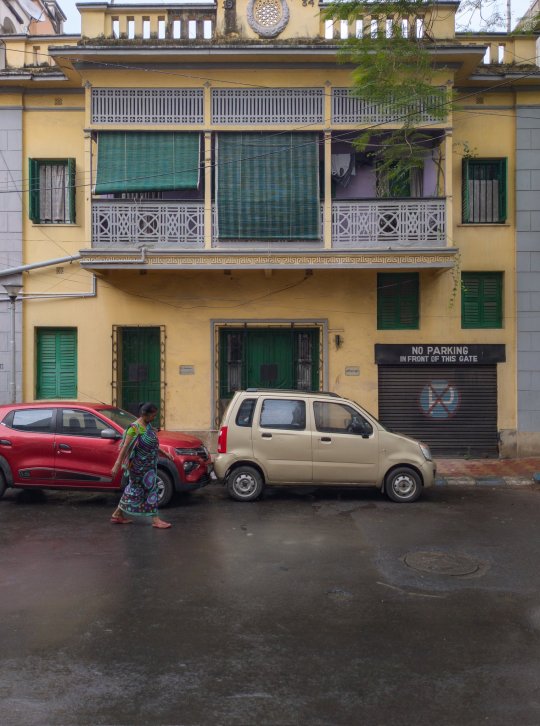

PRETTY DESI HOUSE 🤌🏼🏡
#desiblr#desi tumblr#indian aesthetic#indian culture#desi shit posting#desi tag#being desi#desi aesthetic#desi#desi academia#indian architecture#house#light academia#beautiful pictures#beautiful place#twitter stuff#indian heritage#vintage#hindublr#street photography
199 notes
·
View notes
Photo


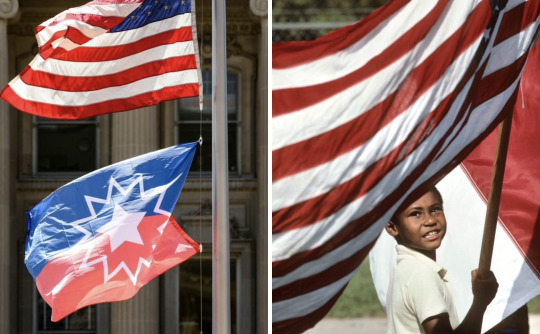


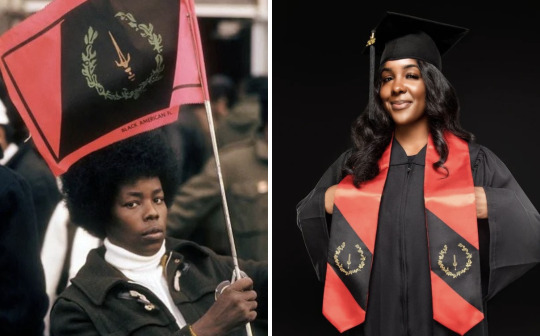
Juneteenth is a Black American holiday.
We call Juneteenth many things: Black Independence Day, Freedom Day, Emancipation Day, Jubilee Day. We celebrate and honor our ancestors.
December 31 is recognized as Watch Night or Freedom’s Eve in Black American churches because it marks the day our enslaved ancestors were awaiting news of their freedom going into 1863. On January 1, 1863, President Lincoln issued the Emancipation Proclamation. But all of the ancestors wouldn’t be freed until June 19, 1865 for those in Galveston, Texas and even January 23, 1866 for those in New Jersey (the last slave state). (It’s also worth noting that our people under the Choctaw and Chickasaw Nations wouldn’t be freed until April 28, 1866 and June 14, 1866 for those under the Cherokee Nation by way of the Treaties.)
Since 1866, Black Americans in Texas have been commemorating the emancipation of our people by way of reading the Emancipation Proclamation and coming together to have parades, free festivities, and later on pageants. Thereafter, it spread to select states as an annual day of commemoration of our people in our homeland.
Here’s a short silent video filmed during the 1925 Juneteenth celebration in Beaumont, Texas:
youtube
(It’s also worth noting that the Mascogos tribe in Coahuila, Mexico celebrate Juneteenth over there as well. Quick history lesson: A total of 305,326 Africans were shipped to the US to be enslaved alongside of American Indians who were already or would become enslaved as prisoners of war, as well as those who stayed behind refusing to leave and walk the Trail of Tears to Oklahoma. In the United States, you were either enslaved under the English territories, the Dutch, the French, the Spanish, or under the Nations of what would called the Five “Civilized” Native American Tribes: Cherokee, Creek (Muscogee), Chickasaw, Choctaw, and Seminoles. Mascogos descend from the Seminoles who escaped slavery during the Seminole Wars, or the Gullah Wars that lasted for more than 100 years if you will, and then settled at El Nacimiento in 1852.)
We largely wave our red, white and blue flags on Juneteenth. These are the only colors that represent Juneteenth. But sometimes you may see others wave our Black American Heritage flag (red, black, and gold).
Juneteenth is a day of respect. It has nothing to do with Africa, diversity, inclusion, immigration, your Pan-African flag, your cashapps, nor your commerce businesses. It is not a day of “what about” isms. It is not a day to tap into your inner colonizer and attempt to wipe out our existence. That is ethnocide and anti-Black American. If you can’t attend a Black American (centered) event that’s filled with education on the day, our music, our food and other centered activities because it’s not centered around yours…that is a you problem. Respect our day for what and whom it stands for in our homeland.
Juneteenth flag creator: “Boston Ben” Haith
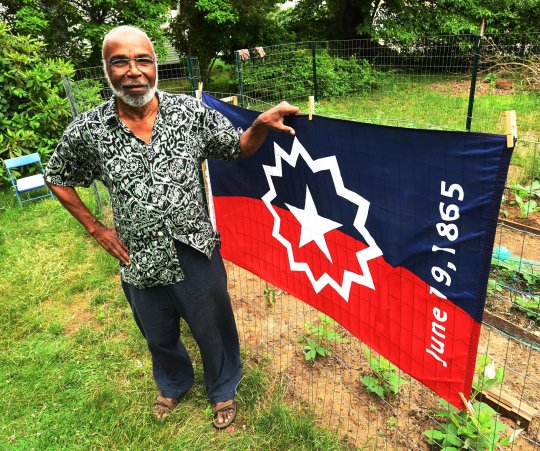
It was created in 1997. The red, white and blue colors represent the American flag. The five-point star represents the Lone State (Texas). The white burst around the star represents a nova, the beginning of a new star. The new beginning for Black Americans.
Black American Heritage Flag creators: Melvin Charles & Gleason T. Jackson

It was created in 1967, our Civil Rights era. The color black represents the ethnic pride for who we are. Red represents the blood shed for freedom, equality, justice and human dignity. Gold fig wreath represents intellect, prosperity, and peace. The sword represents the strength and authority exhibited by a Black culture that made many contributions to the world in mathematics, art, medicine, and physical science, heralding the contributions that Black Americans would make in these and other fields.

SN: While we’re talking about flags, I should note that Grace Wisher, a 13-year-old free Black girl from Baltimore helped stitched the Star Spangled flag, which would inspire the national anthem during her six years of service to Mary Pickersgill. I ain’t even gon hold you. I never looked too far into it, but she prob sewed that whole American flag her damn self. They love lying about history here until you start unearthing them old documents.
In conclusion, Juneteenth is a Black American holiday. Respect us and our ancestors.
#juneteenth#juneteenth flag#black american history#black american culture#ben haith#black american heritage flag#melvin charles#gleason t jackson#grace wisher#american flag#mascogos#juneteenth 2023
1K notes
·
View notes
Text

Chad (1968) ©️ Bernard Louhaur
#chadian women and child#📸:bernard louhaur#blackisbeautiful#blackwomen#blackbeauty#blackwomanmagic#blackwomenaredivine#blackwomenarestunning#african culture#blackandbeautiful#cultural practices#cultural heritage#african heritage#african diaspora#africa#africanwomen#africanbeauty#african ancestry#africamatters#afrocentrism#darkskinmagic#melaninvibes#blackgirlmagic#black people#blackgirlaesthetic#black joy#blackpride#blackpower#blacktumblr
463 notes
·
View notes